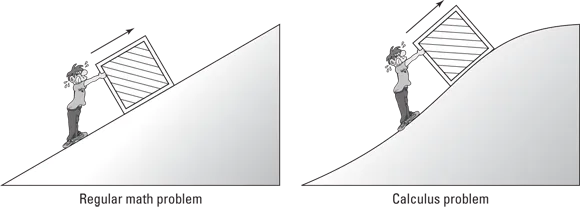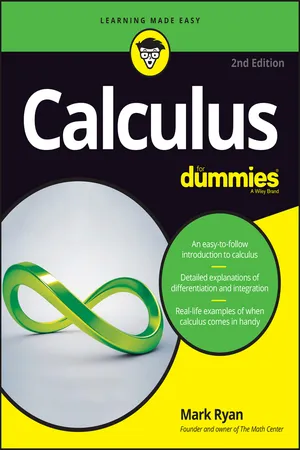Calculus For Dummies
About this book
Slay the calculus monster with this user-friendly guide
Calculus For Dummies, 2nd Edition makes calculus manageable—even if you're one of the many students who sweat at the thought of it. By breaking down differentiation and integration into digestible concepts, this guide helps you build a stronger foundation with a solid understanding of the big ideas at work. This user-friendly math book leads you step-by-step through each concept, operation, and solution, explaining the "how" and "why" in plain English instead of math-speak. Through relevant instruction and practical examples, you'll soon learn that real-life calculus isn't nearly the monster it's made out to be.
Calculus is a required course for many college majors, and for students without a strong math foundation, it can be a real barrier to graduation. Breaking that barrier down means recognizing calculus for what it is—simply a tool for studying the ways in which variables interact. It's the logical extension of the algebra, geometry, and trigonometry you've already taken, and Calculus For Dummies, 2nd Edition proves that if you can master those classes, you can tackle calculus and win.
- Includes foundations in algebra, trigonometry, and pre-calculus concepts
- Explores sequences, series, and graphing common functions
- Instructs you how to approximate area with integration
- Features things to remember, things to forget, and things you can't get away with
Stop fearing calculus, and learn to embrace the challenge. With this comprehensive study guide, you'll gain the skills and confidence that make all the difference. Calculus For Dummies, 2nd Edition provides a roadmap for success, and the backup you need to get there.
Frequently asked questions
- Essential is ideal for learners and professionals who enjoy exploring a wide range of subjects. Access the Essential Library with 800,000+ trusted titles and best-sellers across business, personal growth, and the humanities. Includes unlimited reading time and Standard Read Aloud voice.
- Complete: Perfect for advanced learners and researchers needing full, unrestricted access. Unlock 1.4M+ books across hundreds of subjects, including academic and specialized titles. The Complete Plan also includes advanced features like Premium Read Aloud and Research Assistant.
Please note we cannot support devices running on iOS 13 and Android 7 or earlier. Learn more about using the app.
Information
An Overview of Calculus
What Is Calculus?
What Calculus Is Not
- True or False: Unless you actually enjoy wearing a pocket protector, you’ve got no business taking calculus.
- True or False: Studying calculus is hazardous to your health.
- True or False: Calculus is totally irrelevant.
So What Is Calculus, Already?


Table of contents
- Cover
- Title Page
- Table of Contents
- Introduction
- Part 1: An Overview of Calculus
- Part 2: Warming Up with Calculus Prerequisites
- Part 3: Limits
- Part 4: Differentiation
- Part 5: Integration and Infinite Series
- Part 6: The Part of Tens
- About the Author
- Connect with Dummies
- End User License Agreement
